Abstract
A total of 256 sera collected from three species of domesticated equidae in four different Spanish provinces were examined 1-4 months after the administration of attenuated monovalent African horse sickness virus (AHSV) serotype 4 vaccine. Approximately 10% of the sera were negative by ELISA, virus neutralization, agar gel immuno-diffusion and complement fixation tests. Similar negative reactions were recorded with sera from two ponies after experimental primary vaccination. The rapid rise in antibodies in sera from these two ponies, after a second dose of vaccine, suggested they would probably have been immune to challenge. It is therefore suggested that the apparent absence of antibodies against AHSV in some animals after primary vaccination may not necessarily indicate a total lack of protection.
Full text
PDF
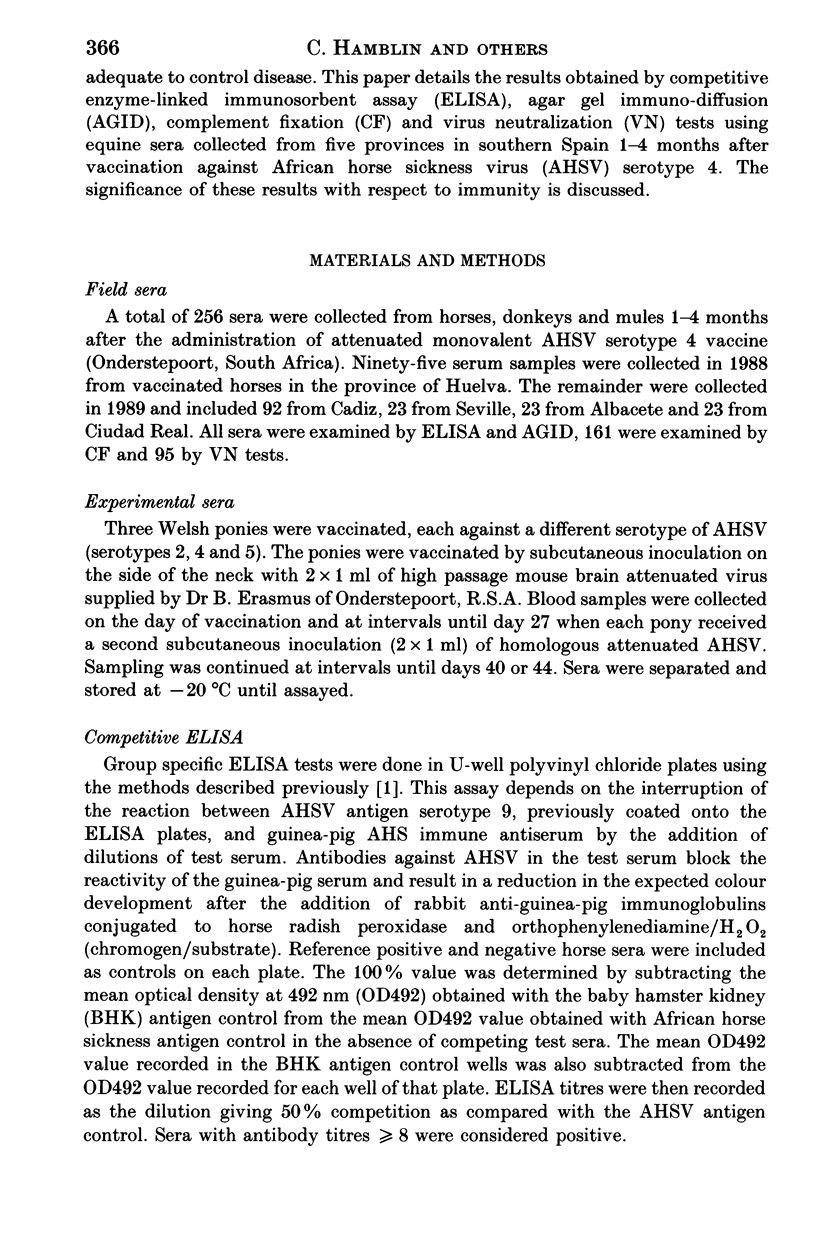
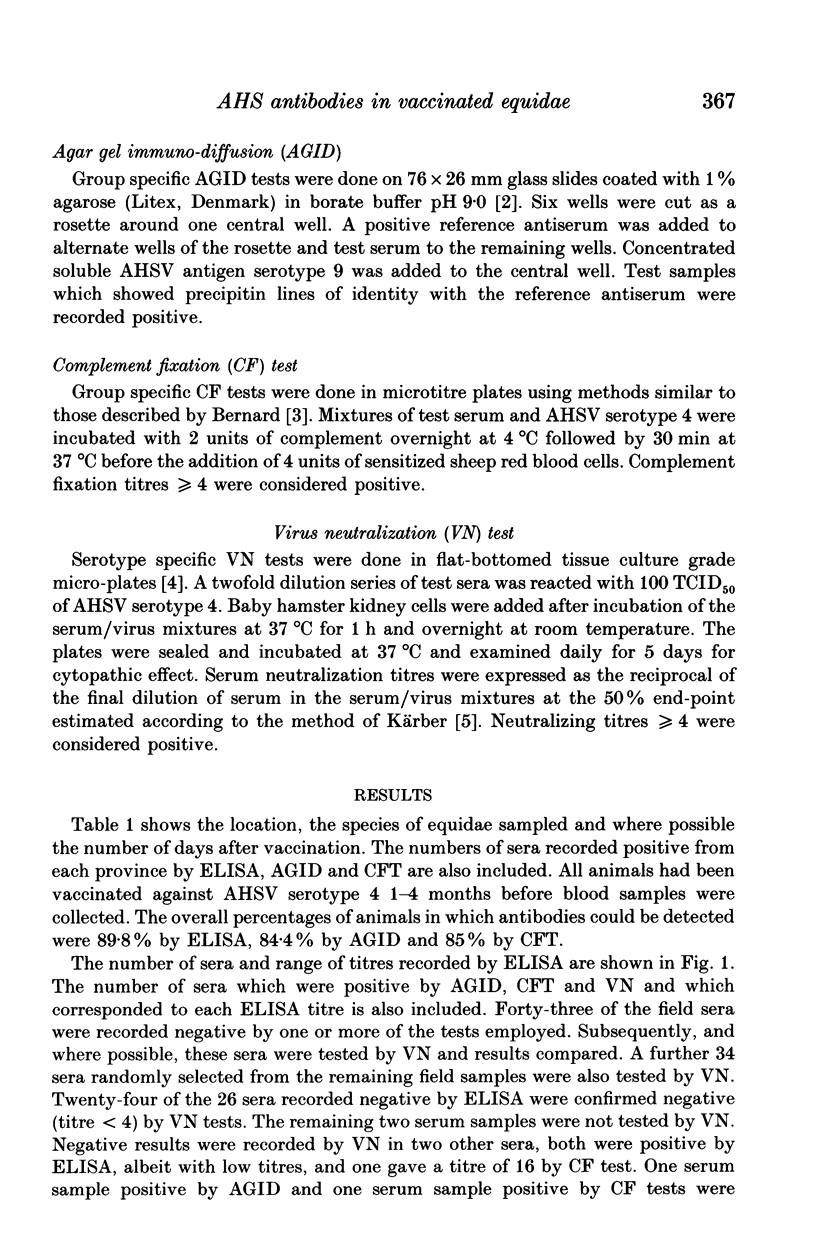
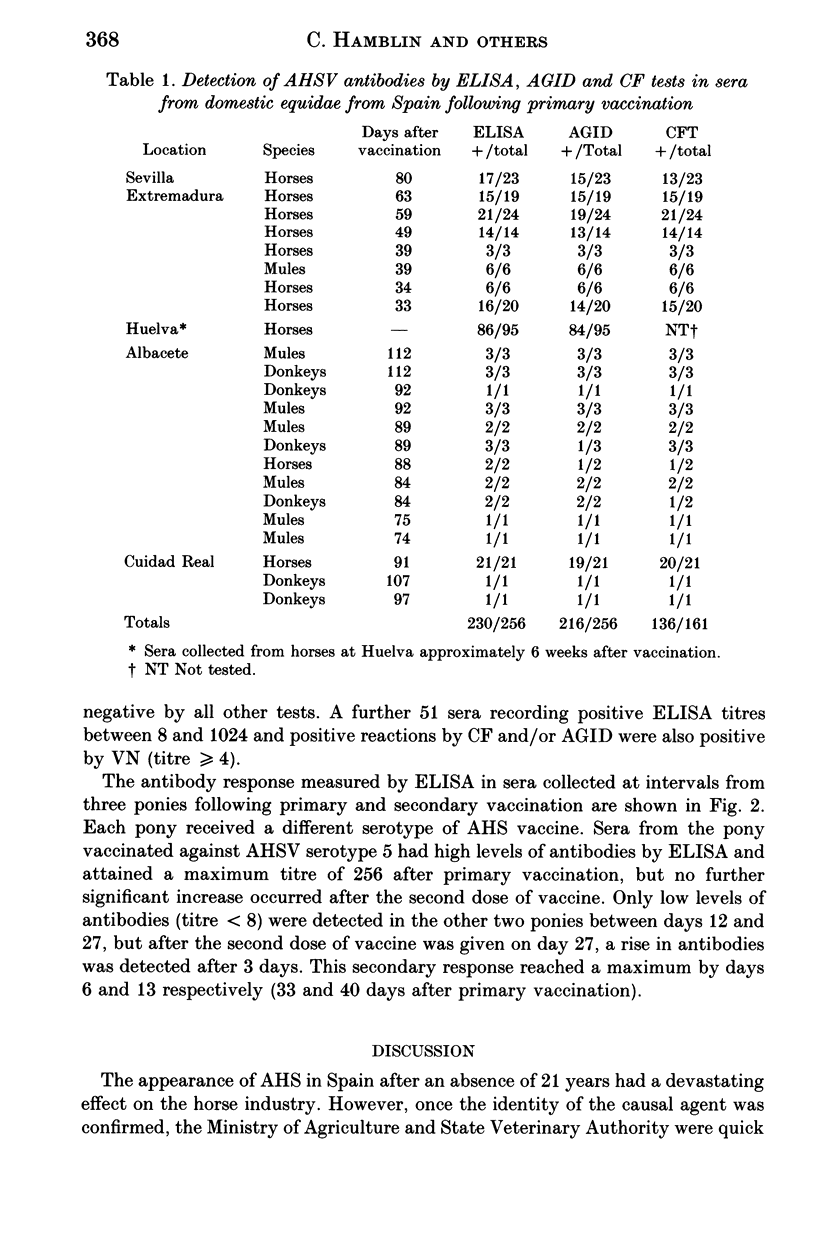
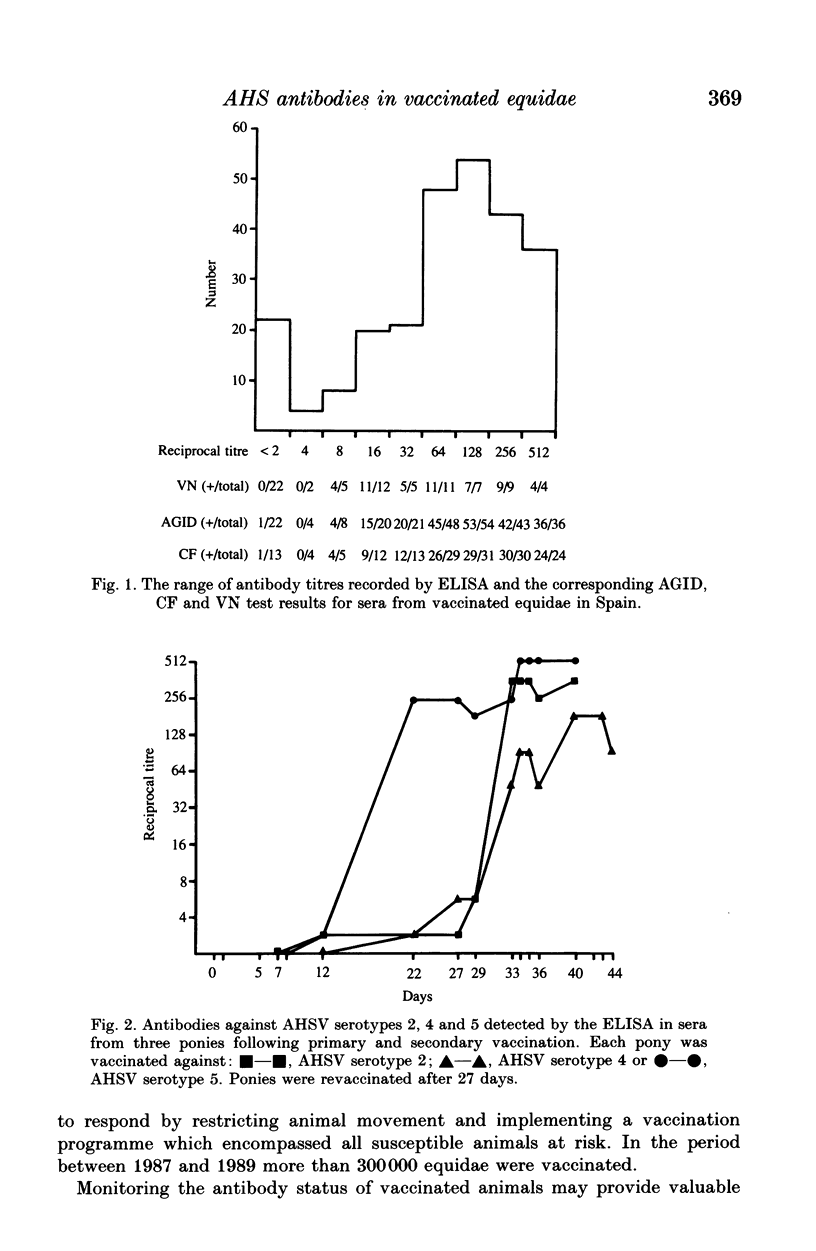
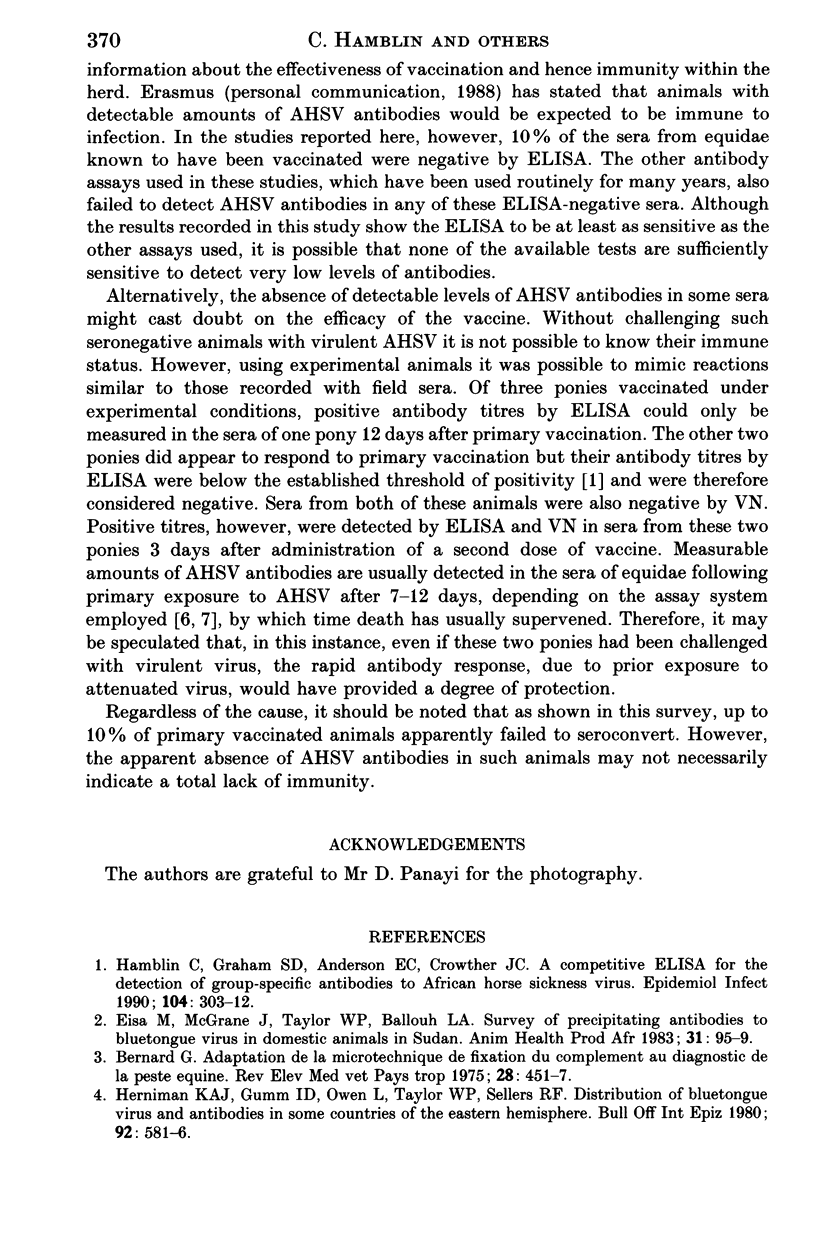

Selected References
These references are in PubMed. This may not be the complete list of references from this article.
- Bernard G. Adaptation de la microtechnique de fixation du complément au diagnostic de la peste équine. Rev Elev Med Vet Pays Trop. 1975;28(4):451–457. [PubMed] [Google Scholar]
- Hamblin C., Graham S. D., Anderson E. C., Crowther J. R. A competitive ELISA for the detection of group-specific antibodies to African horse sickness virus. Epidemiol Infect. 1990 Apr;104(2):303–312. doi: 10.1017/s0950268800059483. [DOI] [PMC free article] [PubMed] [Google Scholar]
- Williams R. A single dilution enzyme-linked immunosorbent assay for the quantitative detection of antibodies to African horsesickness virus. Onderstepoort J Vet Res. 1987 Mar;54(1):67–70. [PubMed] [Google Scholar]


